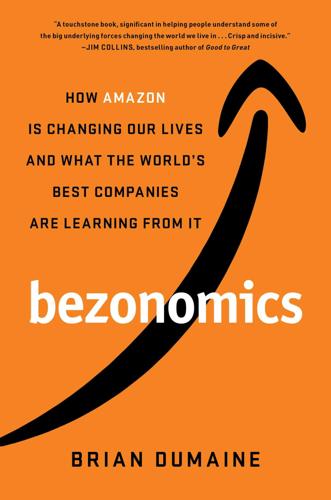data flywheel
description: a business model that leverages data to create a virtuous cycle of improved products, user engagement, and data collection
4 results

Attention Factory: The Story of TikTok and China's ByteDance
by
Matthew Brennan
Published 9 Oct 2020
This virtuous cycle is powerful but doesn’t continue indefinitely. The rate of improvement in user experience is initially fast but will asymptote over time as the user’s profile is enriched further and further to the point where a fully accurate and detailed interest graph has been formed. Above: The core data flywheel of ByteDance’s content platforms. Another limitation of their system was the necessary human element. Toutiao claimed to be a purely technology-driven company, doing away with human editors. Yet this characterization was somewhat misleading. The system still relied heavily on human labor, an army of staff conducting basic repetitive tasks such as tagging articles and manually reviewing content, which aided the machine learning.
…
Reading news and other web content was a high-frequency activity and a stable need for most people. Toutiao’s logo, a newspaper with a bright red banner and characters reading “Headlines,” left little doubt about what the app was for. If they could get a user to try them out from a pre-install, they had a chance to get the data flywheel going, enrich their user profile, and start surfacing personalized content. If the user picked up the habit of using Toutiao, they typically didn’t delete the app from thereon. Few retailers questioned app pre-installs as the practice was rife, and, in an industry where the competition was cut-throat and margins thin, pre-installs were a welcome source of side revenue.

Empire of AI: Dreams and Nightmares in Sam Altman's OpenAI
by
Karen Hao
Published 19 May 2025
As the next step, the company would then select one of these models to scale “to the limit afforded by our 18k A100 cluster.” The language and code models would also be turned into products and released to gather real-world data from the people using them: “New in 2021: we emphasize deploying models as products and learning from user interaction, as it can be a data flywheel that can lead to vast capability improvements.” Under another section, titled “Details,” the document rationalized why this approach made both scientific and business sense. OpenAI’s previous experience had demonstrated that more scale was its “most reliable way of achieving new capabilities.”
…
The Superassistant team instantly pivoted, pulling in several other members as they sprinted to integrate everything and build out the remaining features. To the rest of the company, leadership framed the effort carefully. ChatGPT—the name they settled on—would not in fact be a product launch but a “low-key research preview,” just like DALL-E 2. In the same way, it wouldn’t be monetized but “get the data flywheel going”—in other words, amass more data from people using it—which would help improve GPT-4 and the Superassistant product. Outside of the Superassistant team, everyone took the executives literally. A low-key research preview didn’t require their attention; they needed to stay focused on the GPT-4 launch for early 2023.

Cogs and Monsters: What Economics Is, and What It Should Be
by
Diane Coyle
Published 11 Oct 2021
If a dominant company can dive into anything it thinks looks promising, this is effectively raising barriers to entry for other companies in these other markets. Another striking feature of digital platforms is the data barrier to entry, the vast troves of data big platforms acquire and store about their users. These give rise to a self-reinforcing process, sometimes called the data flywheel or the data loop. If you are a big company providing a great service, you win a lot of customers. If you accumulate their data, you can use it to improve your service, and so win even more customers. The feedback loop is reinforced in the case of advertising-funded platforms by the ability to target ads better, make more money, improve the service, win more customers, get more data, and so on.

Bezonomics: How Amazon Is Changing Our Lives and What the World's Best Companies Are Learning From It
by
Brian Dumaine
Published 11 May 2020
See Amazon Web Services Bagnell, Drew, 175 Baidu search engine, 123, 176 Bain & Company, 201, 235, 236 Baker Center for Leadership, 15 banking industry, 231–36 Amazon’s entry into, 213, 219, 231–32 digitization of, 124 financial data from, 232–33 regulatory challenges for Amazon in, 235–36 robo-advisory services in, 235 Barnes & Noble, 170, 232 Barron’s, 77 Bell Labs, 107 Benson, April, 18–19 Benson, Eric and Susan, 74 Berkshire Hathaway, 27, 226–27, 241 Berners-Lee, Tim, 125 Best Buy, 9, 16, 204–5 Bezonomics AI flywheel and, 76, 80 business’s two camps about, 270 competitive advantage of, 125–26 customer obsession in, 207 disruption by, 8, 27, 125 example of use of wide range of products and, 13–14 expansion into other industries and, 217 global wealth gap and, 125 goal of becoming part of people’s lives and, 14–15 impact on society of, 271 manager selection for new businesses and, 226 new paradigm for business and, 124–25 retailing and, 207, 213 Bezos, Jacklyn (Gise) (Jorgensen) “Jackie,” 31–33, 37, 251 Bezos, Jeff, 29–42 BUSINESS LIFE ability for running large organizations, 33 AI flywheel model, 5–6, 40, 83–84, 88 Alexa and voice recognition and, 109, 110–11, 116 Amazon Prime launch, 95–96 Amazon Prime free shipping decision, 97 on Amazon’s possible failure, 2, 269 attitude on product failures, 65 Blue Origin project, 68–70, 251 business background, 28 challenges to managers by, 53–54 characteristics separating him from other entrepreneurs, 31 Chinese sellers on Amazon.com, 155 confrontational culture of Amazon, 54–57 corporate board member selection, 66–67 customer service focus, 219 delivery time focus, 22 early brick-and-mortar book business, 33, 39–40 expansion into other industries and creation of new businesses, 25, 31, 215, 216–17 finance industry focus, 232 grandfather Gise’s influence, 33–34, 36–37, 42 as hard-driving executive, 30–31 health-care industry changes, 223–24 hedge fund experience, 39 identification with Amazon as founder, 53 industry-disrupting technologies introduction, 8, 24, 27, 116, 124, 125, 139, 168, 217, 260, 267, 271 local politicians’ criticism, 253–55 long-term strategy for Amazon, 59, 61–66 love for technology, 33 making decisions on facts, 43–44 as man of contradictions, 29–30 minimum wage support, 245–47 narrative fallacy belief, 30 New York City headquarters proposal, 30, 57, 252–54 politicians’ criticism, 239 positive qualities as executive, 58–59 Prime Video launch, 25 profitability strategy, 61–62 public perception and criticism, 57 public relations talent, 41, 239, 246 reaction to critics’ attacks on Amazon, 239, 240, 245 search for truth approach, 49, 51, 54–55, 56–57, 59 shadow program, 51–53 six-pager memos, 44, 45–46, 50–51 S-team, 15, 52–53 succession planning, 53 10,000-year clock, 70–71 treatment of competitors, 41–42 trust in data, 44, 45–46, 57 universal basic income support, 248–49 work-life harmony, 82–83 PERSONAL LIFE birth name, 31 family background, 31–34 as family man, 30 first marriage and divorce, 30, 38, 39 grandfather Gise’s influence, 33–34, 36–37 laser focus on work, 37 later relationship after divorce, 30, 39 lesson about human relations, 36–37 move to Seattle, 40 as parent, 38–39 philanthropy, 30, 251–52 resourcefulness, 31, 33, 37–39, 42–43, 59 social consciousness, 67–68 as Star Trek aficionado, 109 university education, 38 wealth and lavish spending, 29, 35 Bezos, MacKenzie, 7, 30, 38–40 Bezos, Mike, 32–33, 251 Bezos Family Foundation, 251–52 Bharara, Vinit, 184 big data. See also customer data flywheel model and, 5, 88 societal and ethical challenges of, 90–91 black box phenomenon, 91, 147 Black Swan, The (Taleb), 30 Blodget, Henry, 62, 65 Bloodworth, James, 132–33 Bloomberg, 81, 167 Blue Moon space vehicle, 70 Blue Origin, 61, 68–70, 251 Bluetooth, 111 Bluhdorn, Charlie, 216 Blumenthal, Neil, 211, 212–13 board of trustees, 66–67 book industry Amazon’s invasion of, 217–18 Bezos’s early brick-and-mortar store in, 33, 39–40 customer data and buying decisions in, 87 early success of Amazon in, 40 Internet revolution and, 125 Boom, Steve, 26 Borders, 170 Bourne, Ryan, 244–45, 247 Brand, Stewart, 71 breakage model, 99 Brewer, Rosalind, 67 Bridgewater, 55 Brooks Brothers, 261–62 Brynjolfsson, Erik, 142 Buffett, Warren, 27, 227, 241 Business Insider, 62, 65, 171, 173 business models AI-driven, 4, 6, 86, 269–70 Amazon’s disruption of other companies’ plans, 260 Amazon’s use of, 208, 234–35, 247 Bezonomics for, 9 Bezos’s creation of, 4, 6, 125, 247 disruptive nature of, 260 influence of national trend of rising pay on, 247 Internet use as basis of, 125 social conscience and, 211 societal and ethical challenges of, 90–91 web as basis for, 125 buying model AI and, 85–87 customer data for predictions in, 87–88 Cainiao, 117–18 Canalys, 115 Cannon, Debra, 209 capitalism, 11, 240, 242–43, 260, 267 Capital One, 236 Carlson, Tucker, 243–44 Carnegie, Andrew, 264 Carney, Jay, 58, 252–53, 254, 263 Carrefour, 189 cars.